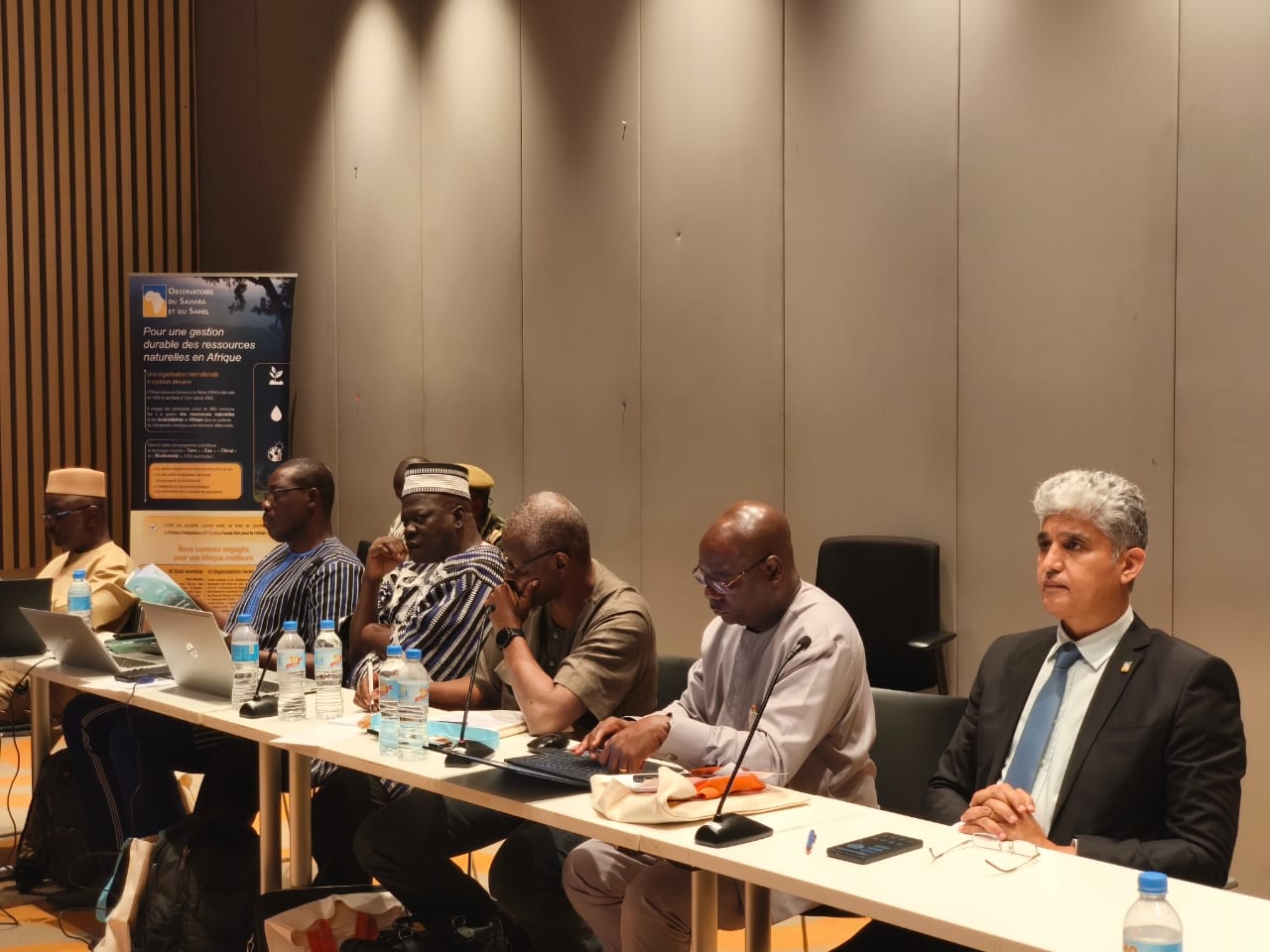
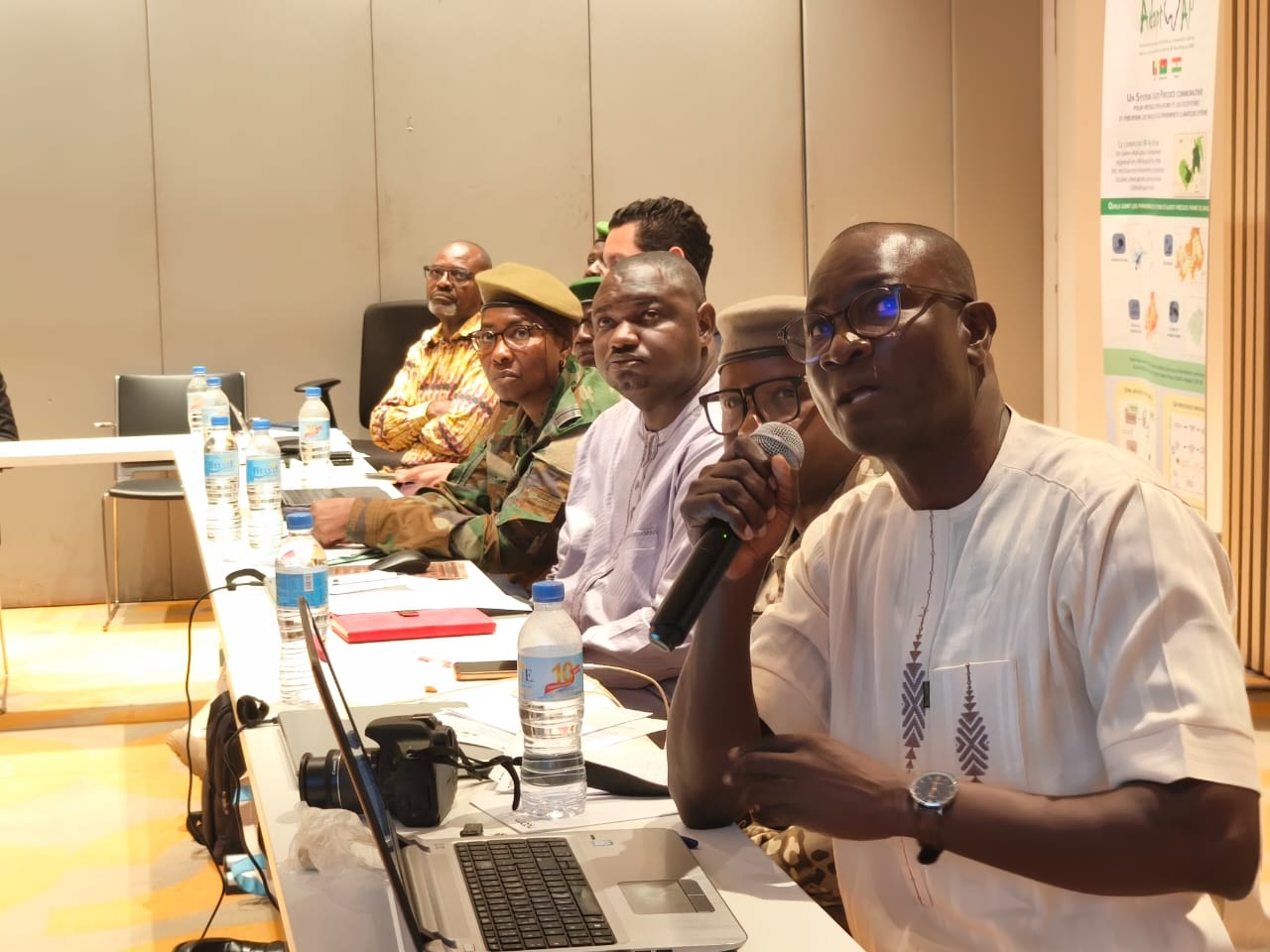

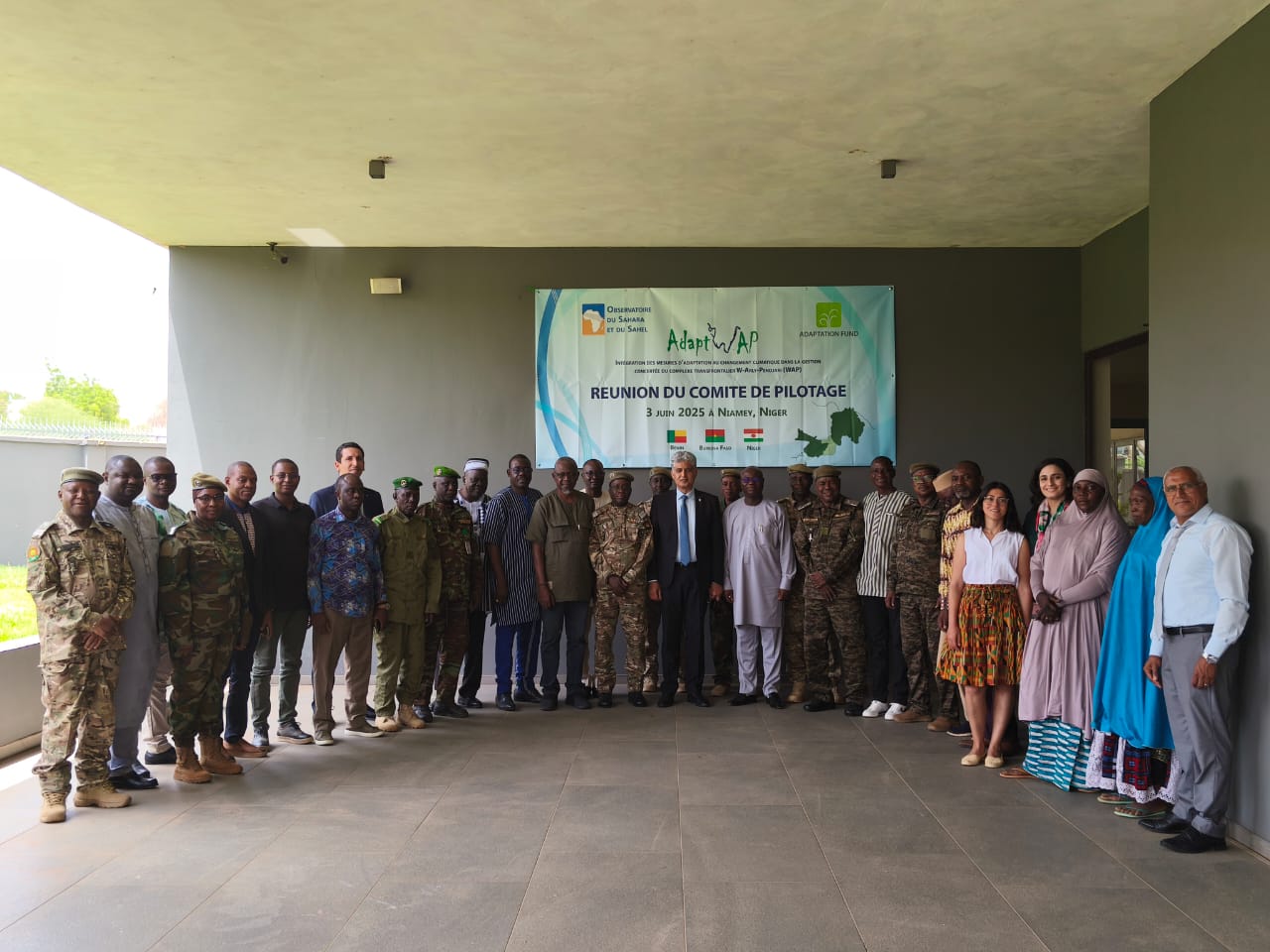
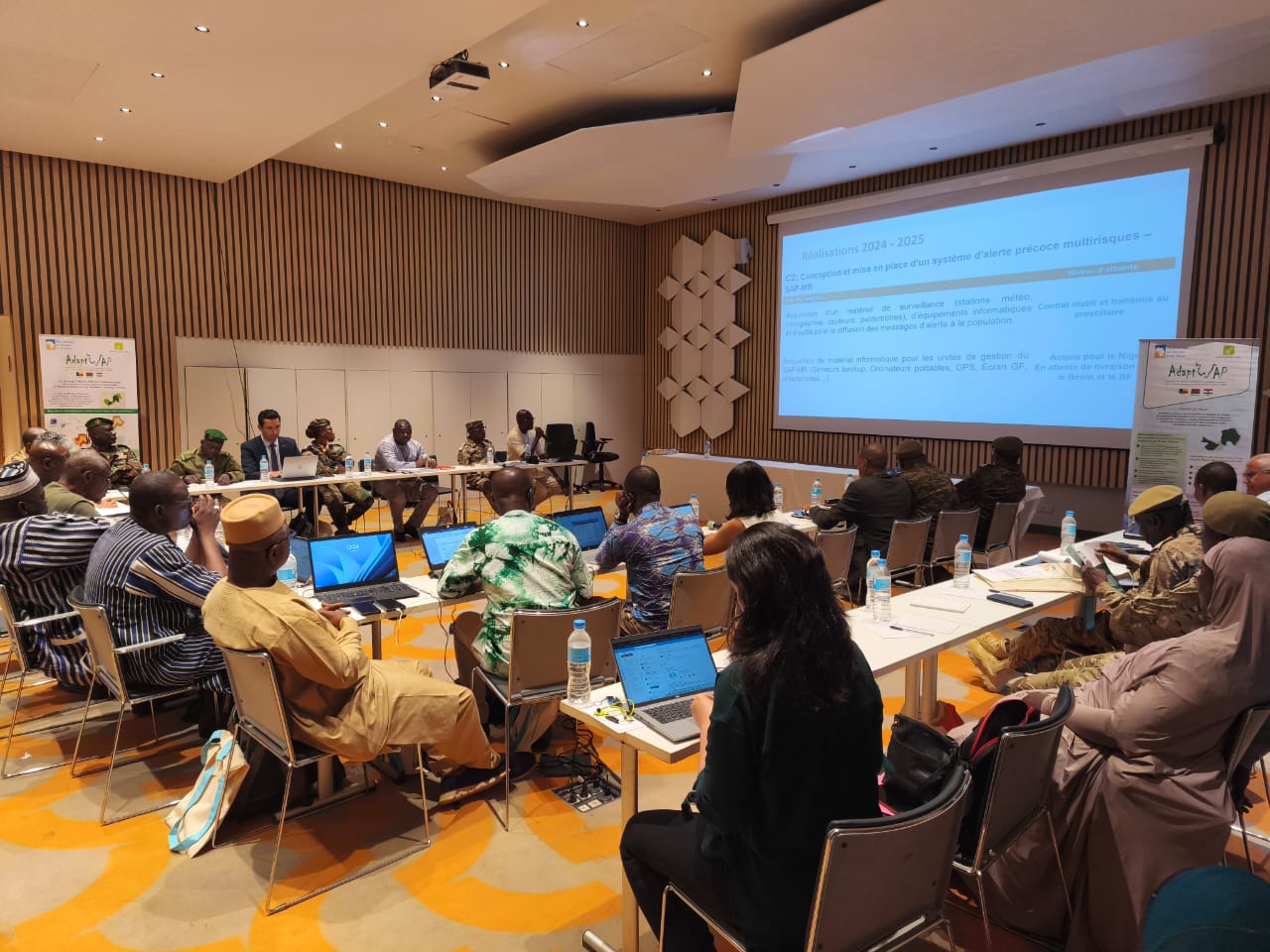



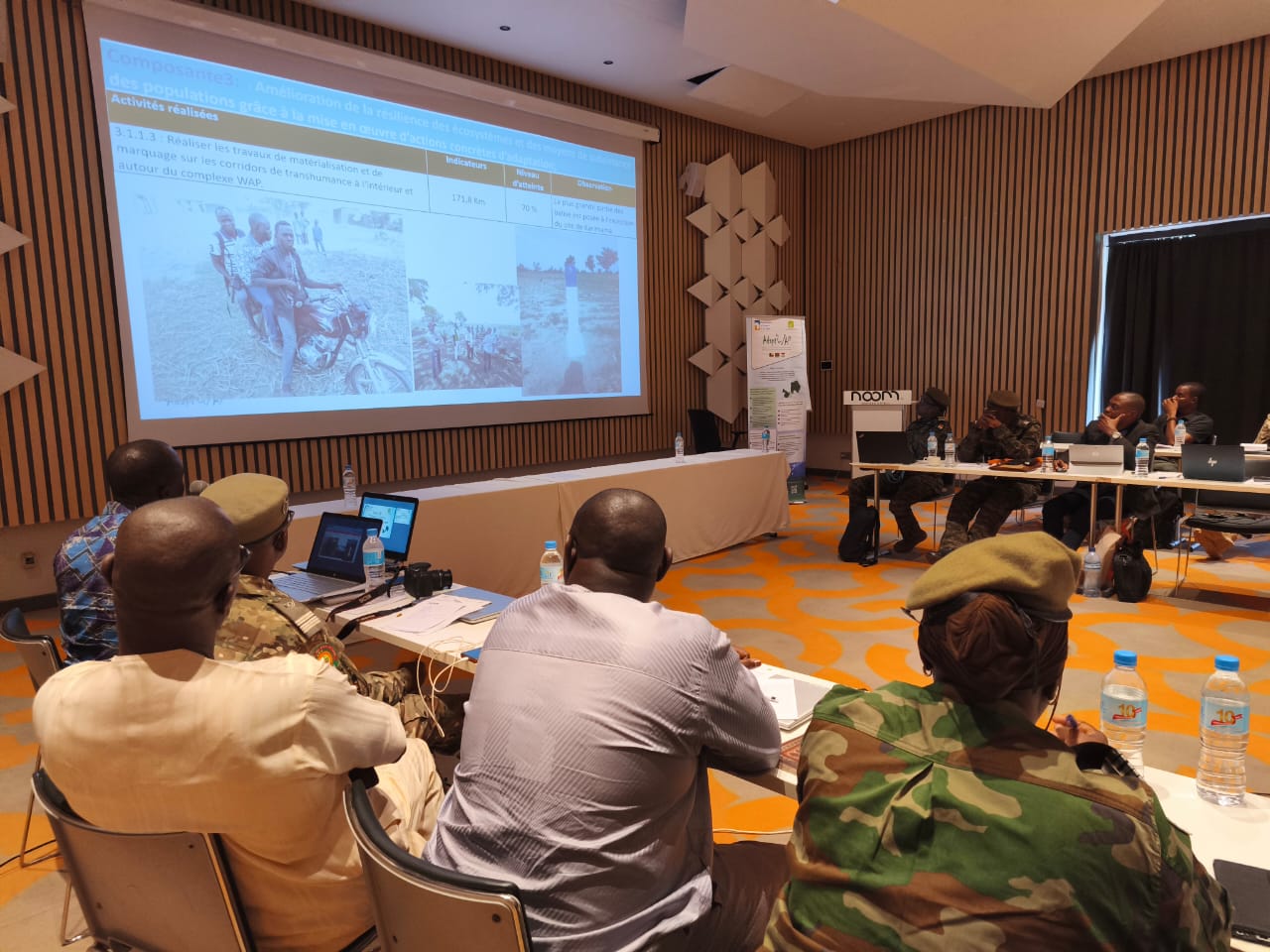
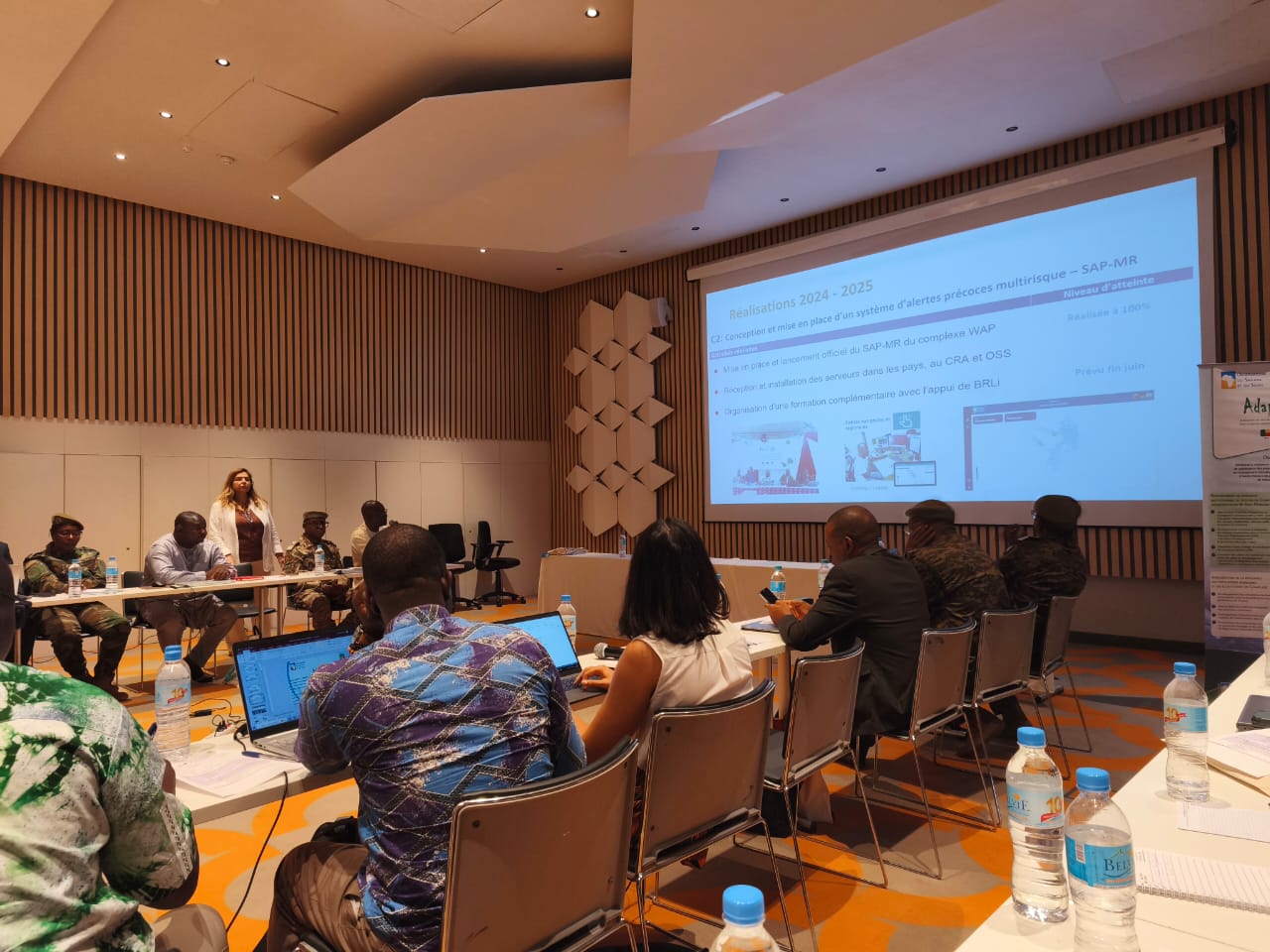
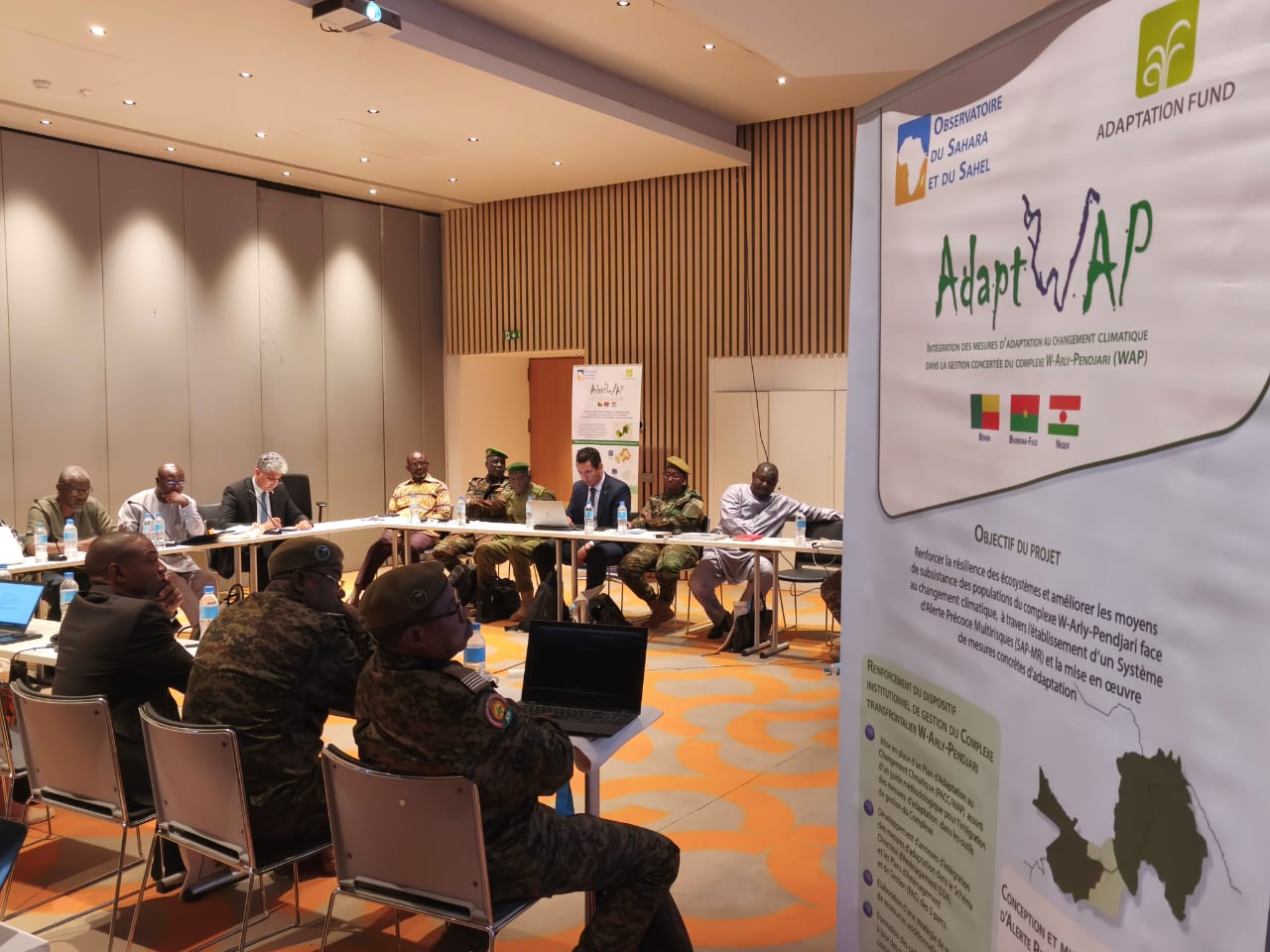
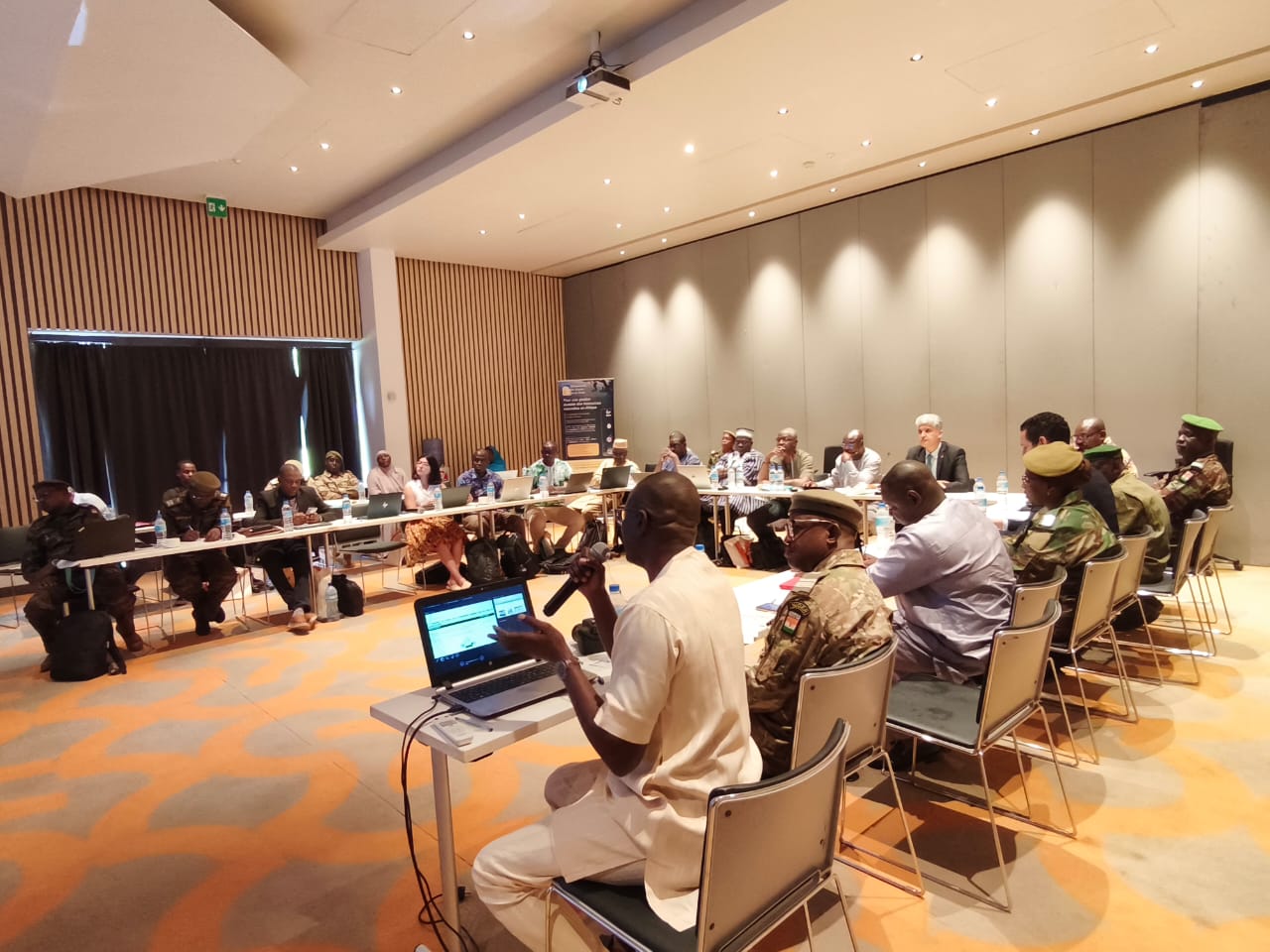
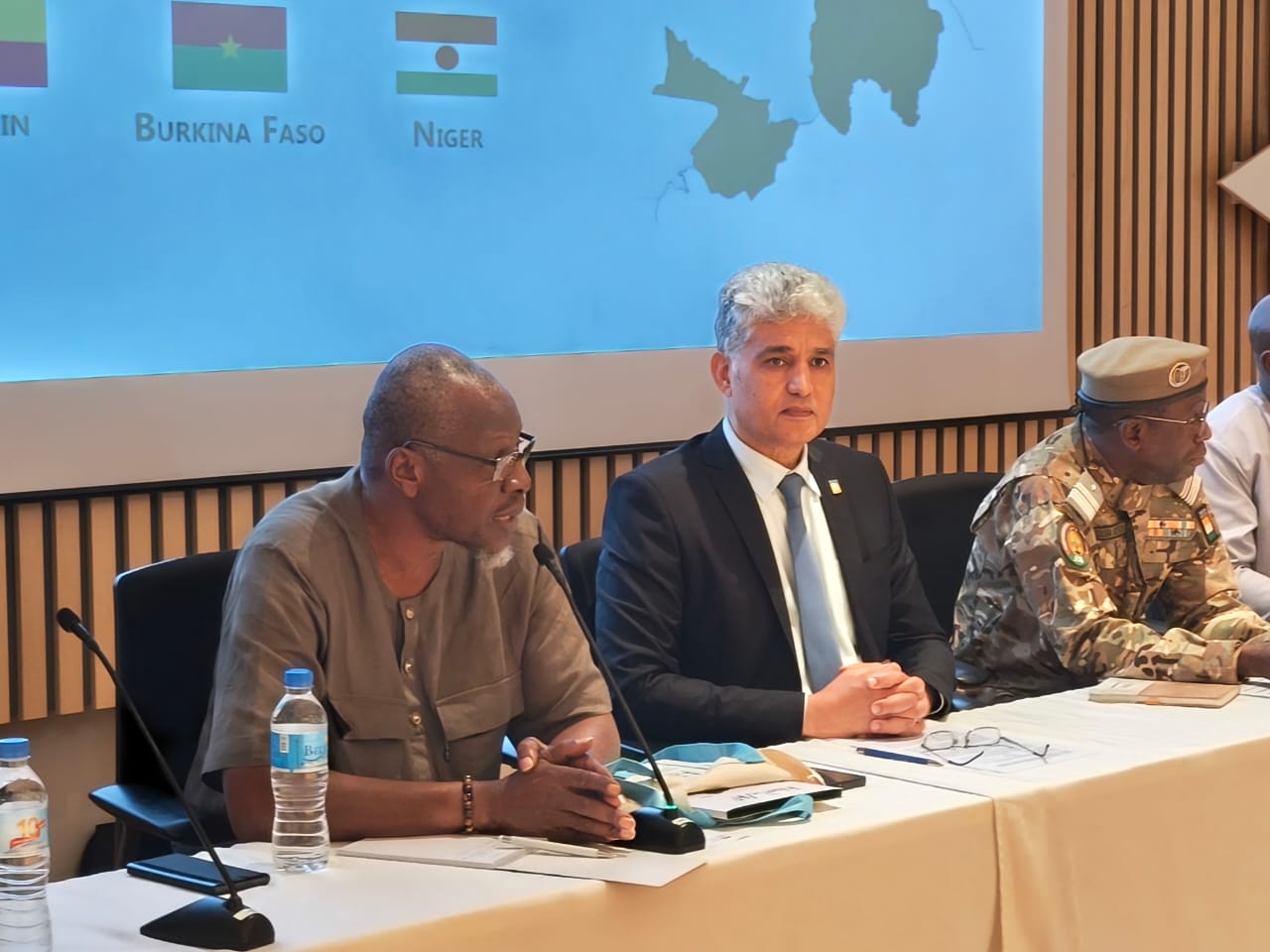


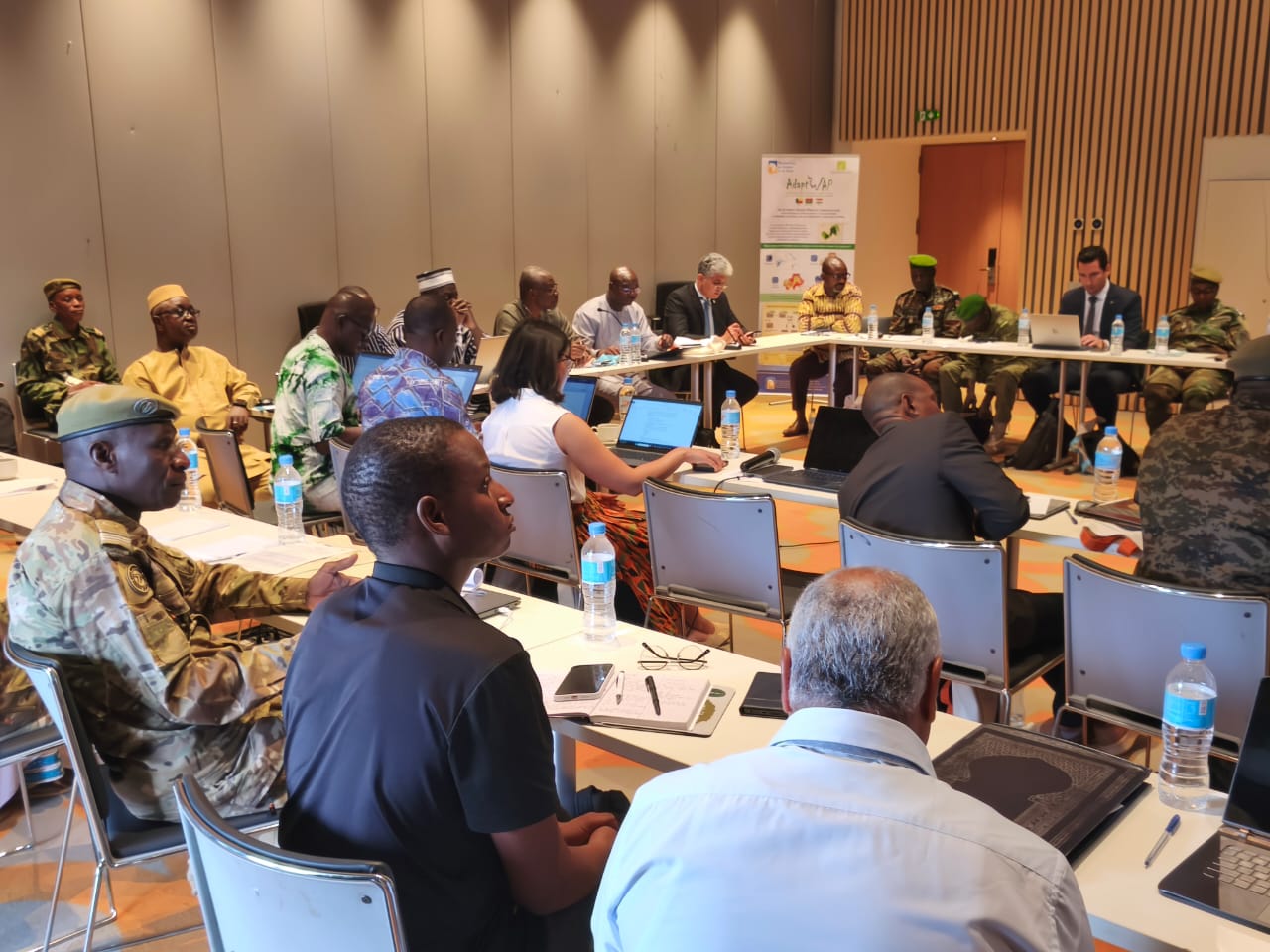



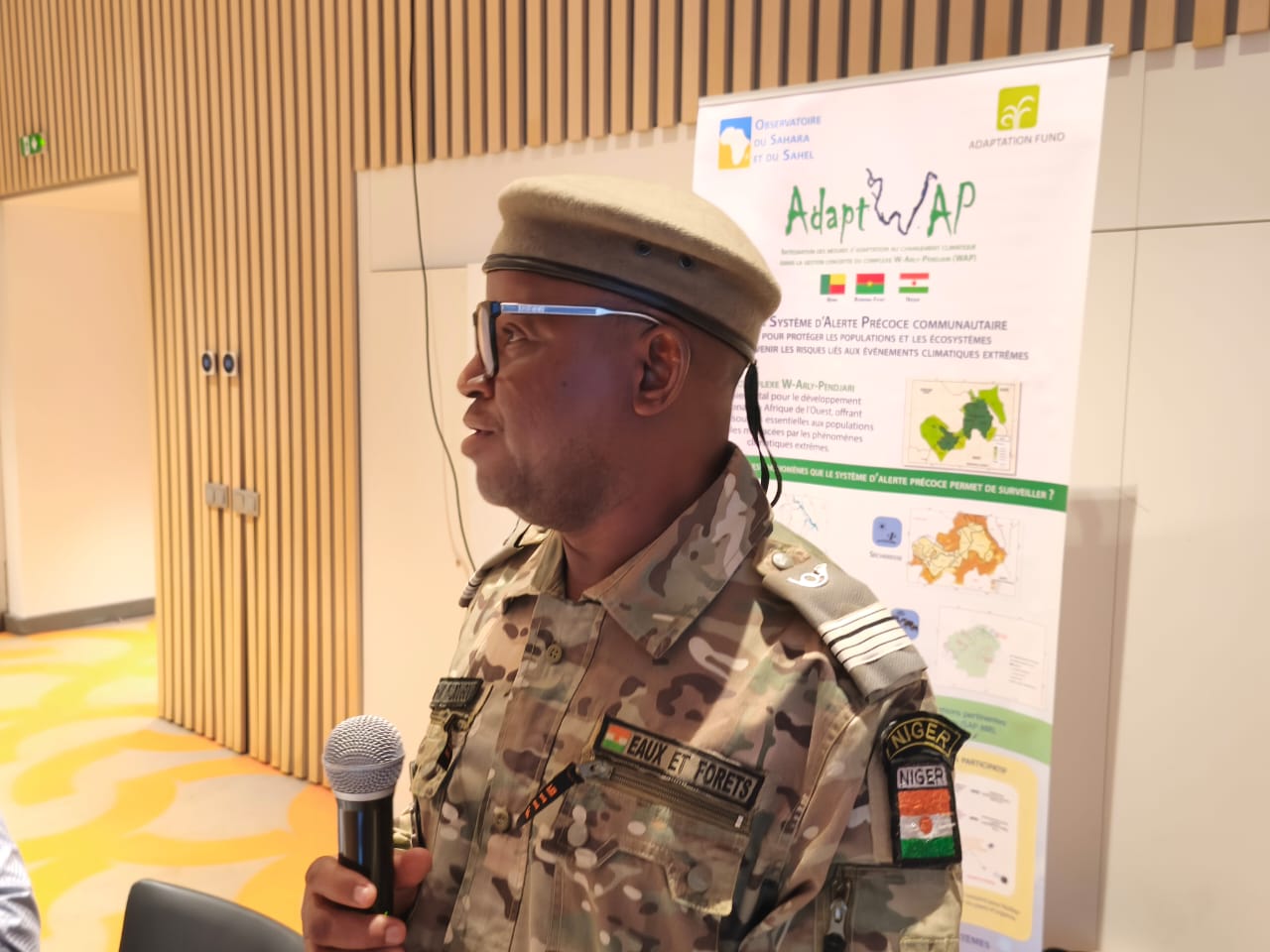
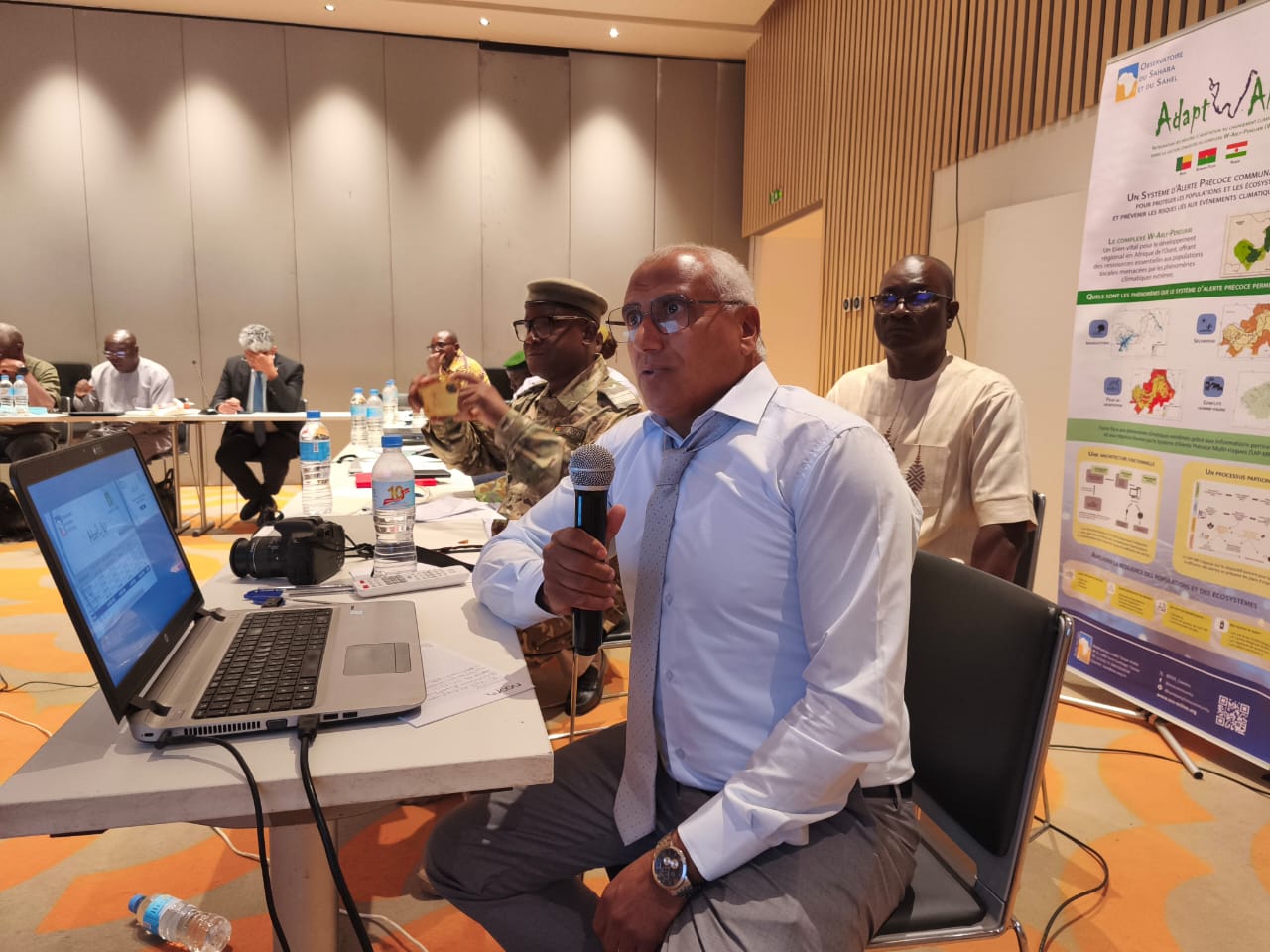
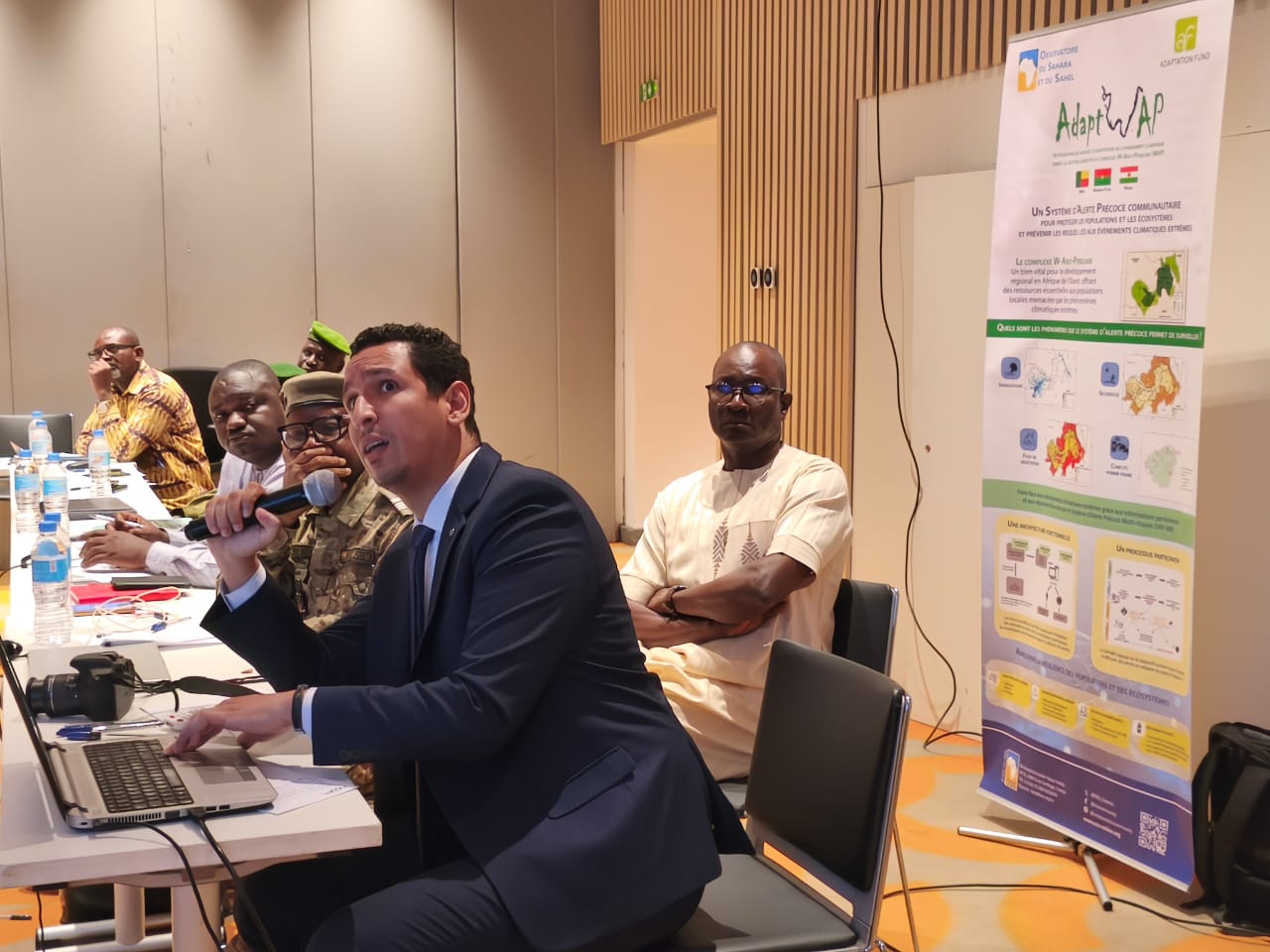
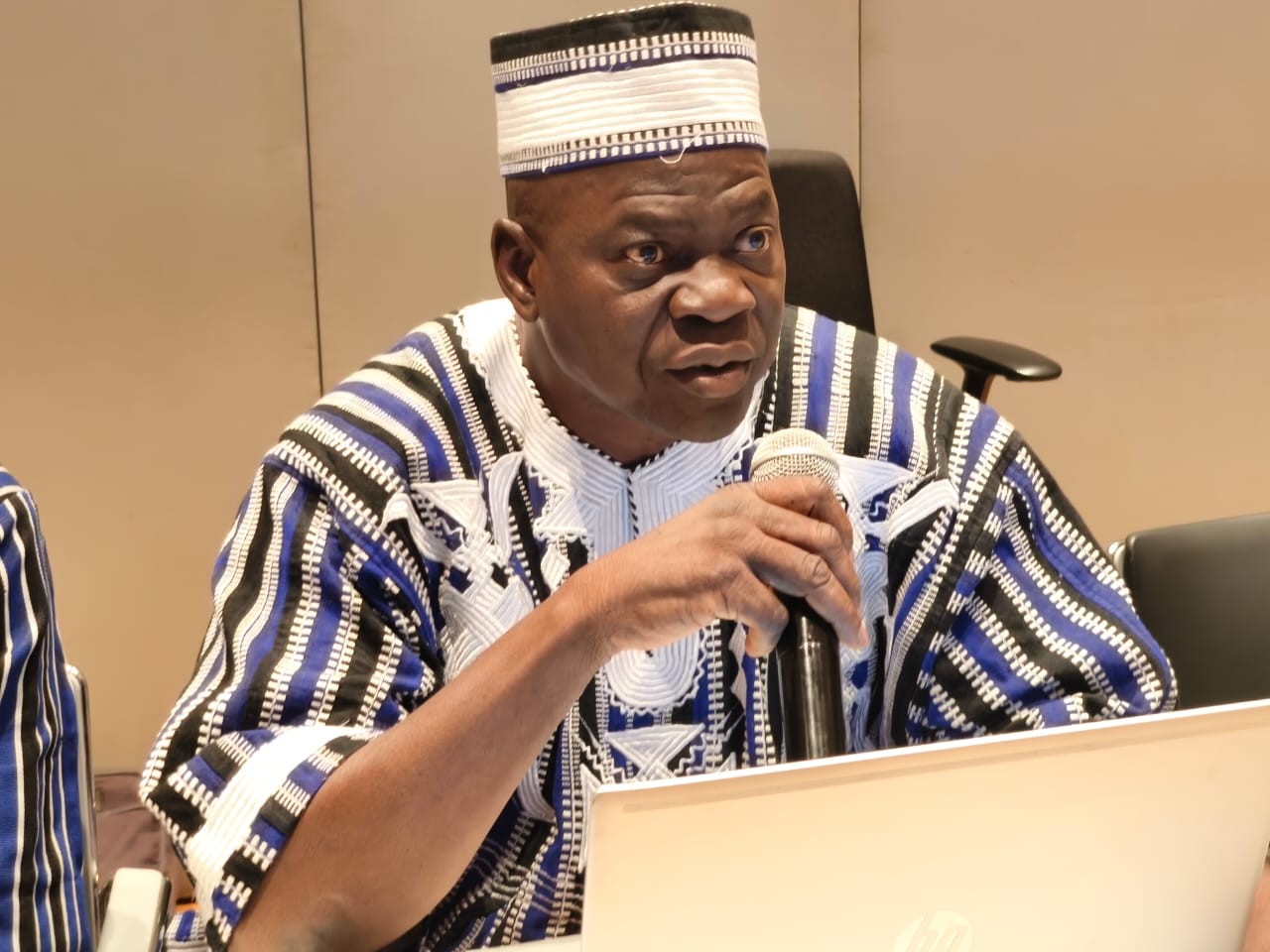

AdaptWAP Steering Committee reviews a pivotal year of implementation. Niamey, June 3, 2025
The Steering Committee of the AdaptWAP project convened on Tuesday, June 3, 2025, in Niamey. The meeting brought together high-level officials, technical actors from the three beneficiary countries — the National Center for Wildlife Reserves Management (CENAGREF) of Benin, the National Office of Protected Areas (OFINAP) of Burkina Faso, and the General Directorate of Water and Forests (DGEF) of Niger — as well as regional partners, local authorities from municipalities bordering the WAP complex, and civil society representatives.
The opening session featured a speech by Mr. Nabil Ben Khatra, Executive Secretary of the Sahara and Sahel Observatory (OSS), who welcomed the project’s recent progress. He highlighted the operationalization of the Green Credit mechanism in the three countries, the effective deployment of the Multi-Hazard Early Warning System (SAP-MR), and the launch of a regional digital platform with an interactive GIS portal.
Mr. Abdelaziz Baba Moussa, Director General of CENAGREF and current Chair of the Steering Committee, emphasized the importance of maintaining close coordination among stakeholders and ensuring diligent follow-up of commitments. He praised the joint efforts made despite ongoing challenges and called for the capitalization of best practices while ensuring the sustainability of actions undertaken.
In his official address, Colonel-Major Yacouba Seydou, Director General of Water and Forests of Niger, underscored the relevance of AdaptWAP in strengthening the resilience of the transboundary W-Arly-Pendjari complex amid multiple regional vulnerabilities. He reaffirmed Niger’s commitment to the project and stressed the need to anchor its results within national policies, enhance local ownership, and mobilize beneficiaries to complete activities on schedule.
The technical session provided an opportunity to review the major achievements of 2025. The SAP-MR system was reinforced through server installation in the three countries, emergency plan updates, capacity building at multiple levels, and the provision of specialized equipment. Concrete adaptation and ecological restoration actions were initiated, with strong involvement from civil society organizations. Around 1,200 beneficiaries were identified in secure areas to carry out high-impact, community-driven income-generating activities. Educational campaigns raised awareness among more than 20,000 students across 19 municipalities bordering the WAP complex.
Restoration efforts included the development of over 35 km of wildlife corridors, the planting of 10,000 trees, the rehabilitation of water infrastructure — including a multifunctional solar-powered borehole — and the distribution of vegetable seeds to six women's groups.
Participant discussions enabled the sharing of concrete feedback and a realignment of priorities for the final implementation phase. All attendees reiterated their shared commitment to making this final stretch a collective success for the benefit of the ecosystems and communities surrounding the W-Arly-Pendjari complex.